Let’s Look at Chinese Dumplings
If you love Chinese dumplings, you’re in for a treat! This post is all about these tasty little pockets of goodness—and how you can make them right in your own kitchen.
Whether you call them jiaozi, potstickers, gyoza, or dim sum dumplings, they all share something in common: that irresistible bite of savory filling wrapped in tender dough.
Dumplings are a huge part of Chinese cuisine, enjoyed for everyday meals and special celebrations like Lunar New Year. And trust me, once you’ve made a batch of homemade dumplings, you’ll wonder why you didn’t try it sooner.
In this post, I’ll walk you through everything you need to know—from choosing the right wrappers and fillings, to folding techniques and cooking methods. I’ll also share some classic flavor combos, tips for freezing dumplings for later, and easy dipping sauces to round out your dumpling feast.
No special tools required—just a little time, a bit of patience, and a love for good food. Ready to roll up your sleeves? Let’s dive in and start making dumplings!
Types
There are many different types of Chinese dumplings, each with its own unique filling and preparation method. Some popular types include:
English Name | Chinese Name | Description | Preparation Method |
| Boiled Dumplings | 水饺 (Shuǐjiǎo) | Classic dumplings with juicy fillings, often served with dipping sauce | Boiled in water until cooked |
| Pan-Fried Dumplings | 锅贴 (Guōtiē) | Crispy-bottomed dumplings, tender on top—also called potstickers | Pan-fried, then steamed briefly |
| Steamed Dumplings | 蒸饺 (Zhēngjiǎo) | Delicate wrappers with flavorful filling, light and tender | Steamed in a bamboo or metal steamer |
| Soup Dumplings | 小笼包 (Xiǎolóngbāo) | Thin-skinned dumplings filled with meat and rich broth, famously juicy | Steamed in a bamboo basket |
| Wontons | 馄饨 (Húntún) | Smaller, thinner dumplings often served in soup | Boiled, sometimes fried, served in broth or with sauce |
| Crystal Shrimp Dumplings | 虾饺 (Xiājiǎo) | Translucent wrappers with shrimp filling, popular in dim sum | Steamed |
| Tangyuan (Sweet Dumplings) | 汤圆 (Tāngyuán) | Glutinous rice balls with sweet filling, enjoyed during festivals | Boiled and served in sweet soup |
Chinese dumplings can be made at home by purchasing pre-made wrappers or making your own wrappers, and filling them with a variety of ingredients. They are also a popular street food, and can be found in many Chinese restaurants and food courts.
In addition to being delicious, Chinese dumplings are also a relatively inexpensive and versatile dish, making them a popular food for families and large gatherings.

What Sauces Go Well with Chinese Dumplings?
Chinese dumplings are often served with a variety of dipping sauces to add flavor and enhance the overall taste experience. Some popular sauces that go well with Chinese dumplings include:
Sauce Name | Description |
| Classic and simple; often mixed with rice vinegar, sesame oil, or chili oil for extra flavor. | |
| Black Vinegar | Tangy, slightly sweet vinegar often served with potstickers and steamed dumplings. |
| Chili Oil | Spicy oil made from chili peppers and aromatics; adds heat and depth to any dumpling. |
| Sesame Paste | Thick, nutty sauce made from ground sesame seeds; pairs beautifully with savory dumplings. |
| Garlic Sauce | Bold sauce of garlic, vinegar, soy sauce, and sesame oil; delivers a punchy garlic flavor and bright acidity. |
| Soy-Vinegar | Balanced combo of soy sauce and vinegar; simple, tangy, and savory—perfect for highlighting dumpling flavors. |
| Hoisin Sauce | Sweet, rich sauce made from soybeans, sugar, and spices; especially good with pan-fried or grilled dumplings. |
| Yuzu Ponzu | Citrus-based soy sauce with yuzu juice; adds a bright, fresh, and tangy flavor. |
| Sweet Chili Sauce | Sweet and mildly spicy sauce made from red chilies and sugar; great for adding a sticky, sweet heat. |
| Spicy Peanut Sauce | Creamy sauce made from peanuts, chili, and soy; offers a rich, nutty, and spicy complement. |
| Scallion Ginger Sauce | Fresh and aromatic sauce combining scallions, ginger, oil, and salt; adds a fragrant, sharp bite. |
These are just a few examples of popular dipping sauces that go well with Chinese dumplings, but the options are endless, and you can experiment with different combinations of flavors to find your favorite. It’s also possible to make your own sauce at home, by mixing ingredients according to your taste preference.
History
The origins of Chinese dumplings can be traced back to the Han Dynasty (206 BC – 220 AD), where they were traditionally eaten during the Chinese New Year as a symbol of wealth and prosperity. They are a popular food in Northern China, particularly in the regions of Beijing and Shandong, but can also be found throughout China and in Chinese communities around the world.
Dumpling Names Across the Globe
Chinese dumplings are known by different names in different countries and regions around the world. Some of the most common names include:
Name | Country/Region | Description |
| Empanadas | Spain, Latin America | Baked or fried pastry turnovers filled with meats, cheeses, or vegetables, popular in many regions. |
| Gyoza | Japan | Pan-fried dumplings with thin wrappers, typically filled with ground pork, cabbage, and garlic chives. |
| Jiaozi / Potstickers | United States, Canada | Known as potstickers in Chinese-American cuisine; pan-fried and served with soy-based dipping sauces. |
| Khinkali | Georgia | Large, juicy dumplings typically filled with spiced meat and broth, eaten by hand. |
| Mandu | Korea | Korean dumplings with a variety of fillings, enjoyed steamed, boiled, or fried, often served in soup. |
| Manti | Turkey, Central Asia | Tiny meat-filled dumplings served with yogurt, garlic, and spiced butter sauce, a beloved Turkish dish. |
| Momos | Nepal, Tibet, Bhutan | Steamed or fried dumplings often filled with spiced meats or vegetables, served with chili sauces. |
| Pelmeni | Russia | Small, meat-filled dumplings boiled and served with sour cream or butter; originally brought by the Mongols. |
| Pierogi | Poland | Half-moon shaped dumplings filled with savory or sweet ingredients, typically boiled then sautéed in butter. |
| Ravioli | Italy | Square pasta pockets stuffed with cheese, meat, or vegetables, usually boiled and served with sauce. |
| Samosa | India, South Asia | Fried or baked pastry pockets filled with spiced potatoes, peas, or meat; often served as a snack. |
Chinese dumplings are also known as “dumplings” or “potstickers” in many English-speaking countries, and are often referred to by their specific name, such as “steamed dumplings” or “soup dumplings”.
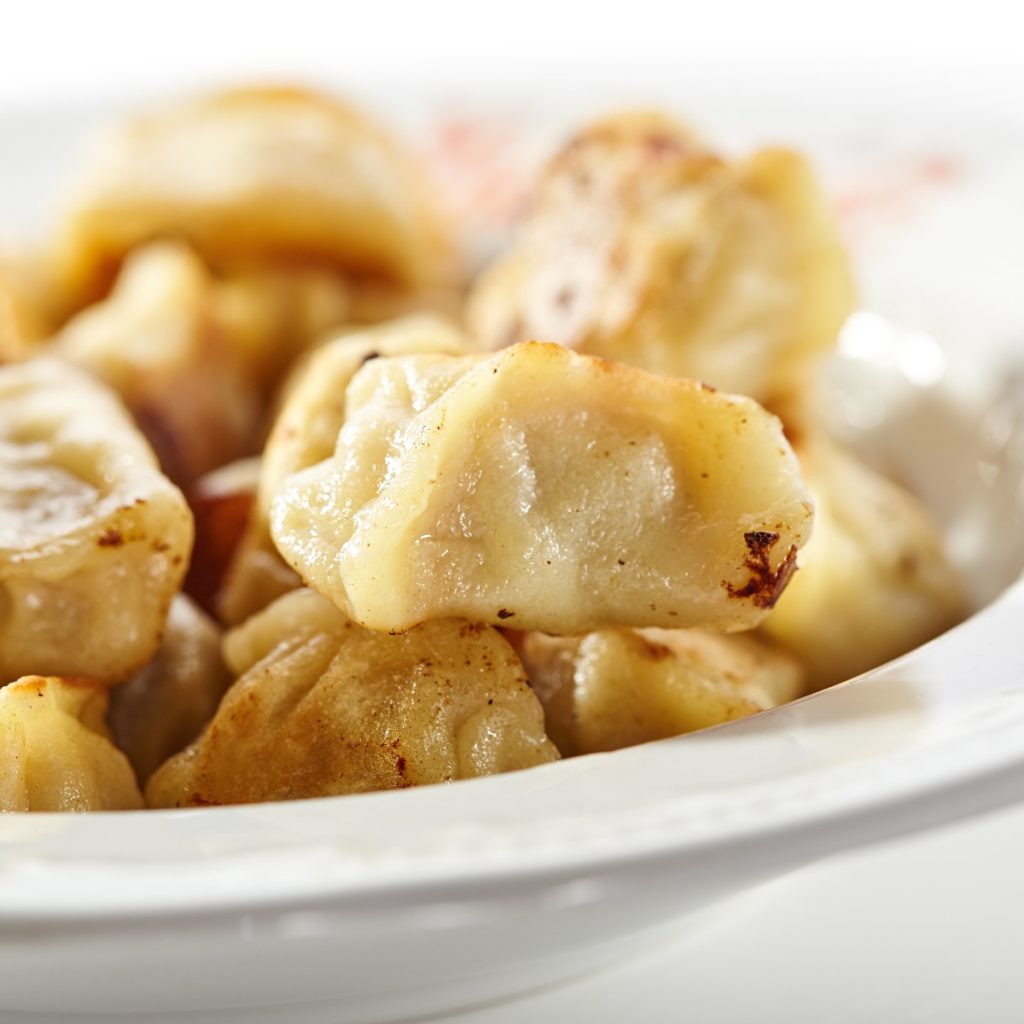
Chinese Dumpling Recipe
This recipe is for pan-fried dumplings, but you can also boil or steam dumplings by following the same process but replacing the oil with water and steaming them for a couple of minutes more. You can also experiment with different fillings such as vegetables, seafood or tofu, and you can also use round or square wrappers depending on your preference.
Chinese Dumplings Recipe
Ingredients
- 1 pound pork coarsely ground
- 1 cup scallions finely chopped
- 3 tablespoons soy sauce
- 1 tablespoon Asian sesame oil
- 1 tablespoon ginger root peeled and grated
- ½ pound Chinese Napa cabbage finely chopped
- 1 package Chinese dumpling wrappers
Instructions
Prep the Ingredients
- Finely chop the scallions, peel and grate the ginger root and finely chop the cabbage.
- Have the other ingredients ready including your dumpling wrappers and you are ready to go.
How to Make Pork Dumplings at Home
- Combine the ground pork, scallions, soy sauce,sesame oil and ginger root in a large bowl and mix together well so all the ingredients will blend.
- Add the cabbage and mix again.Susanna Foo says don't try mixing all the ingredients together at one time or the filling will "not taste right".
- Now lay a bunch of the wrappers on a clean dry surface, plate, or cutting board with room to work. The cookbook says to add a"scant tablespoon" of pork mixture to the center of each wonton but depending on the size of the wrappers, that might be too much or too little. We used 3-inch diameter wrappers and a little less than a tablespoon worked just fine.
- Have a glass of water handy to dip your finger in so you can moisten the edges of the wrapper. This will help the wrapper stay closed. Also, have a baking sheet lined with wax paper standing by to store the dumplings.
- Fold the wrapper in half to form a half-moon shape and then pinch the center together. "Stand the dumpling upon its base and pleat one of the sides of the half-moon twice, halfway between the other edge and the center."
- Repeat the pleats on the other side and leave the dumpling standing up. Place it on the baking sheet standing up being careful not to let the dumplings touch or they will stick together.
- Repeat with the rest of the wrappers and pork filling.
- These dumplings can be cooked right away or frozen for up to 3 months. You can boil or pan-fry them. We cooked them both ways but the pan-fried ones definitely had more flavor.

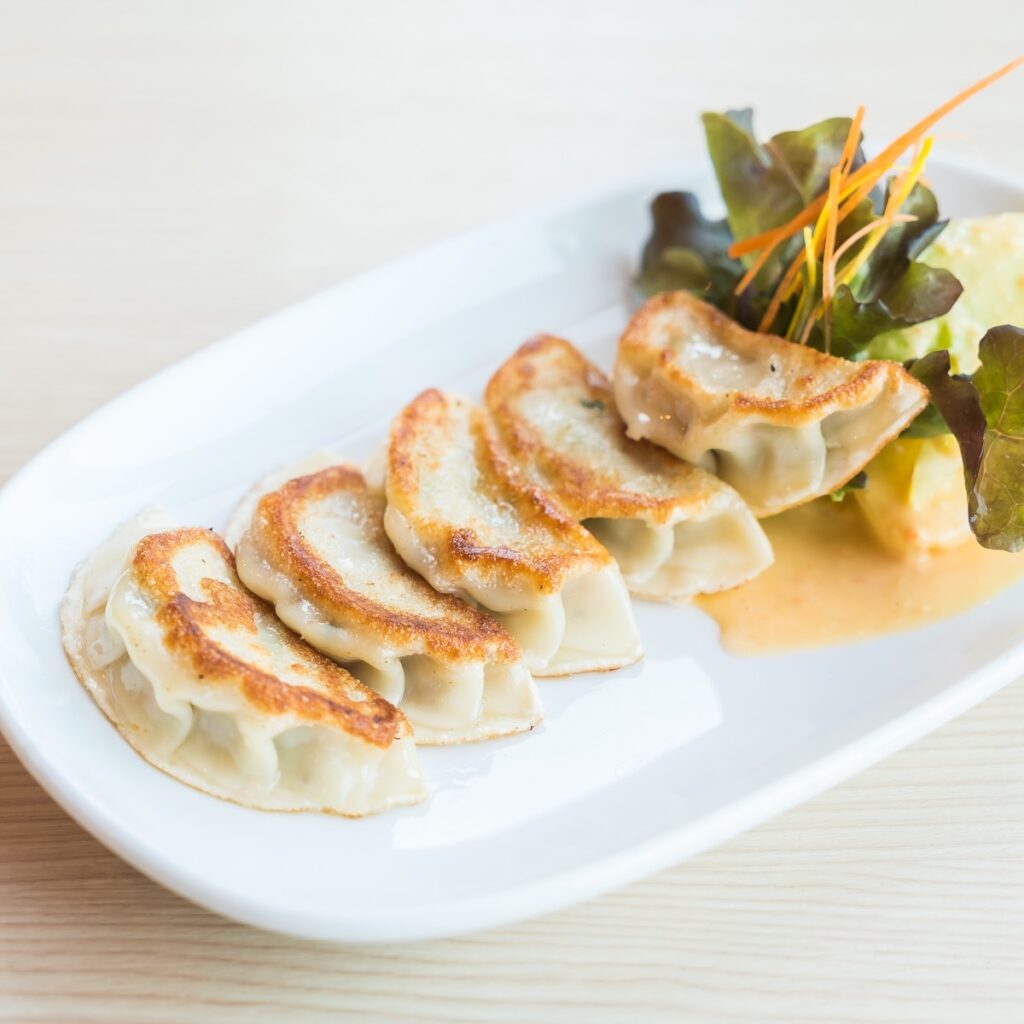

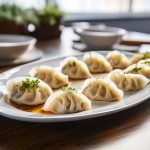
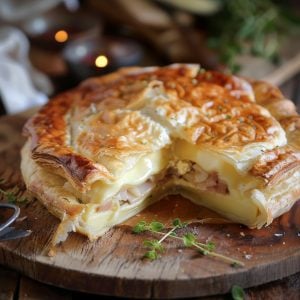
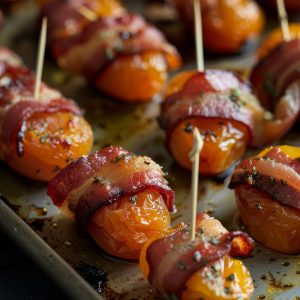

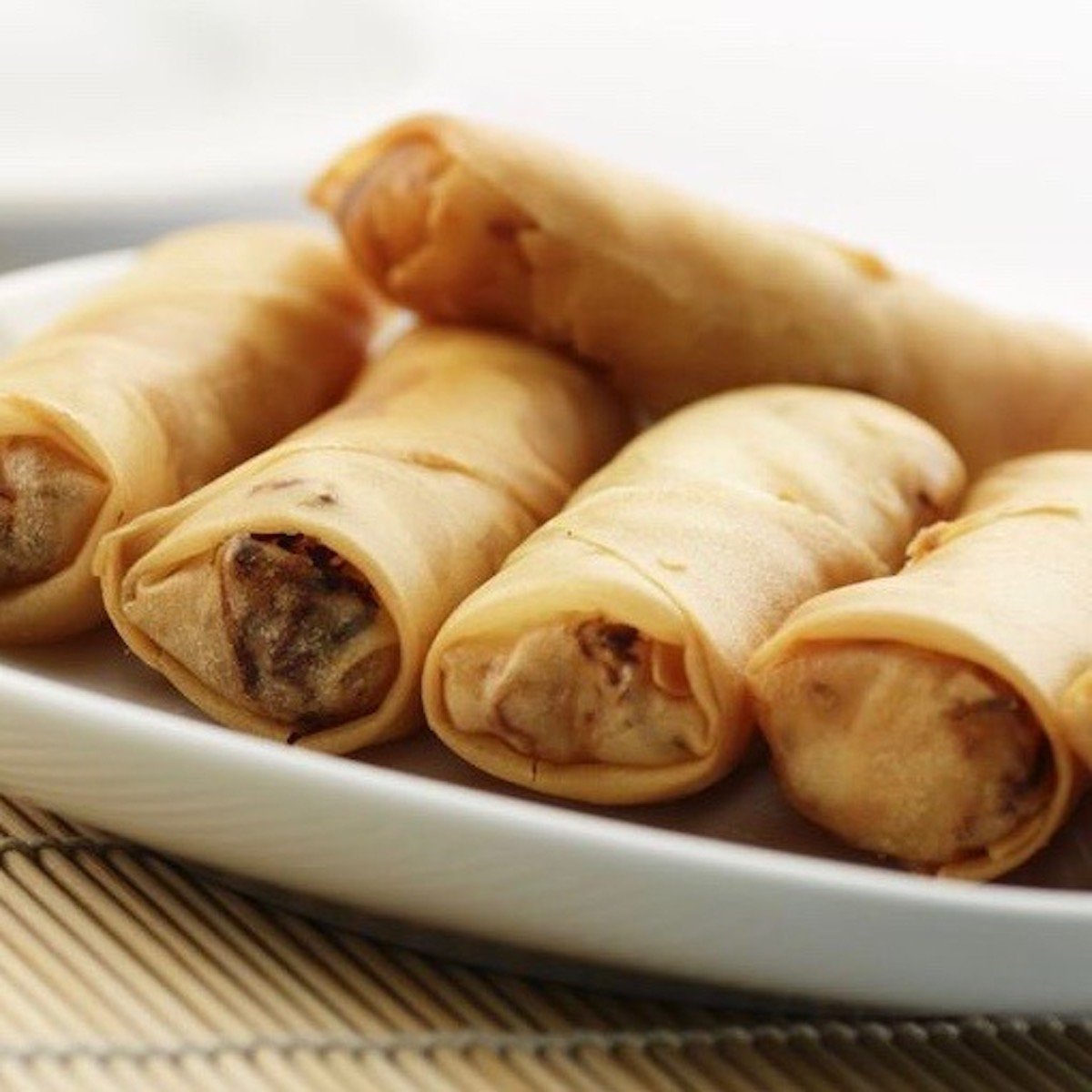
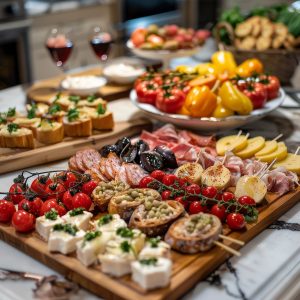
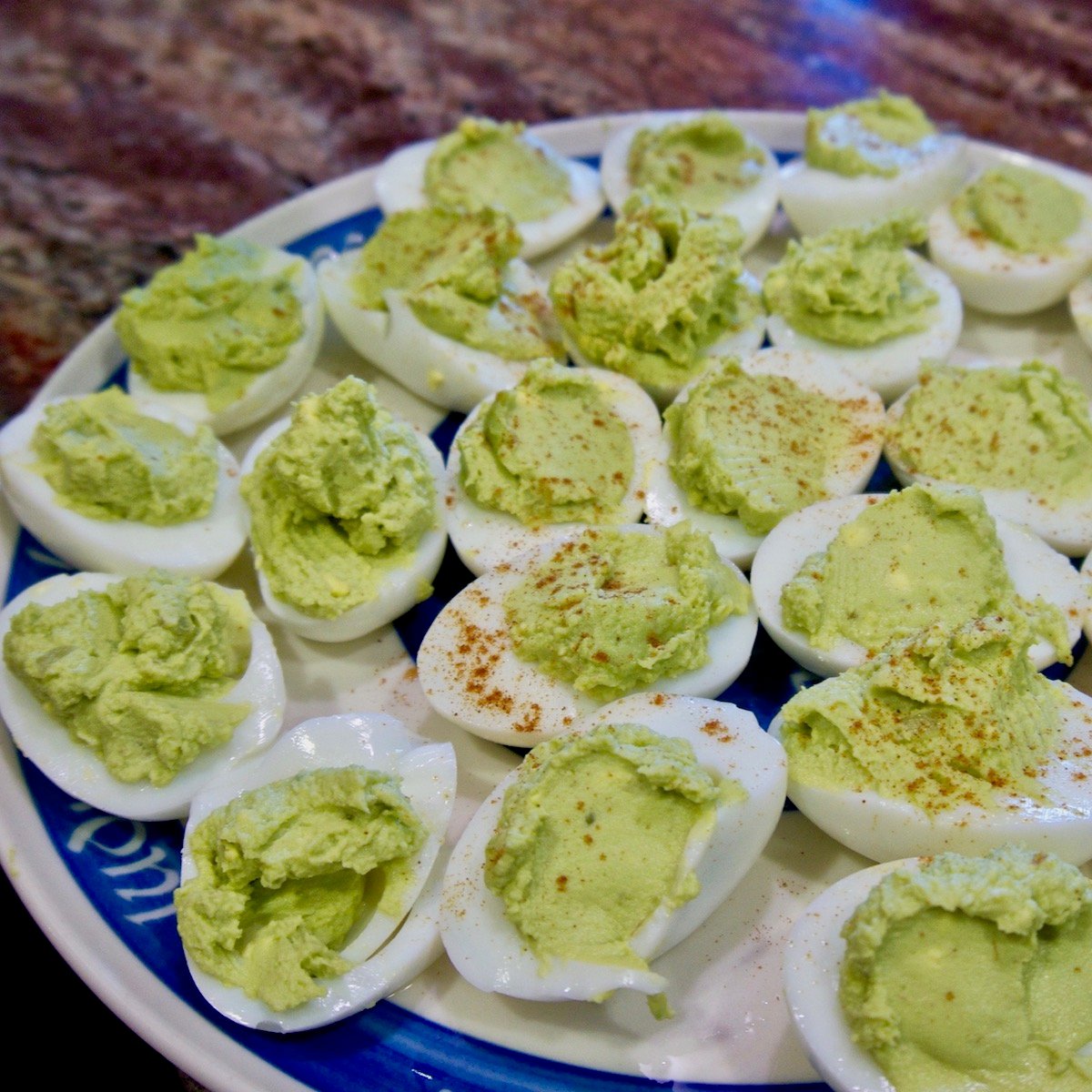
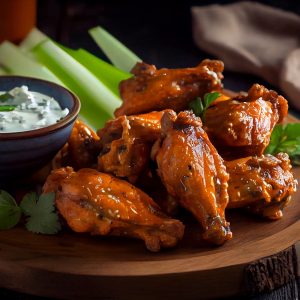
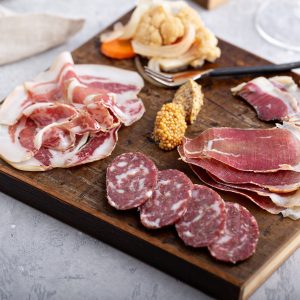


6 Responses
This is a butcher looking to get fired and I hope you indulged him by complaining to management. Especially as you are a Chef.
Thanks blondee47. Hope you don’t mind I edited your comments since this is a family cooking blog and my kids read it. – RG
A VERY BIG difference between veal and pork at the grocery store should be the knowledge that some religions explicitly forbid pork! A butcher should definitely know that there is a difference!
Great point Rike, thanks. – RG
My suspicion for his flippant attitude is possibly how much (little) they pay him per hour. Sounds like they shouldn’t be letting him near sharp knives anyway.
In your chinese dumpling Ingredients you have the following
•4-5 eggs, scrambled in vegetable oil and then finely chopped ?
What is finely chopped scrambled Eggs?
Hi Andre, after you scramble the eggs, cut them up to small pieces. – RG
Hi, I lived in China for a year working closely with foodies. I was far too spoilt to be bothered to make Jiaozi (dumplings). Now, many years down the track, I hanker for them, but now living a very Westernised population of 220 in the wet tropics – and having come across your fantastic recipe – I hanker no longer. We love them and make a great variety of them for the cooler winter nights – (yes it gets down to 20oC). Cool enough for Pho & Jiaozi. Thanks for the great recipes guys.
Cheers, Peter
You are very welcome Peter.